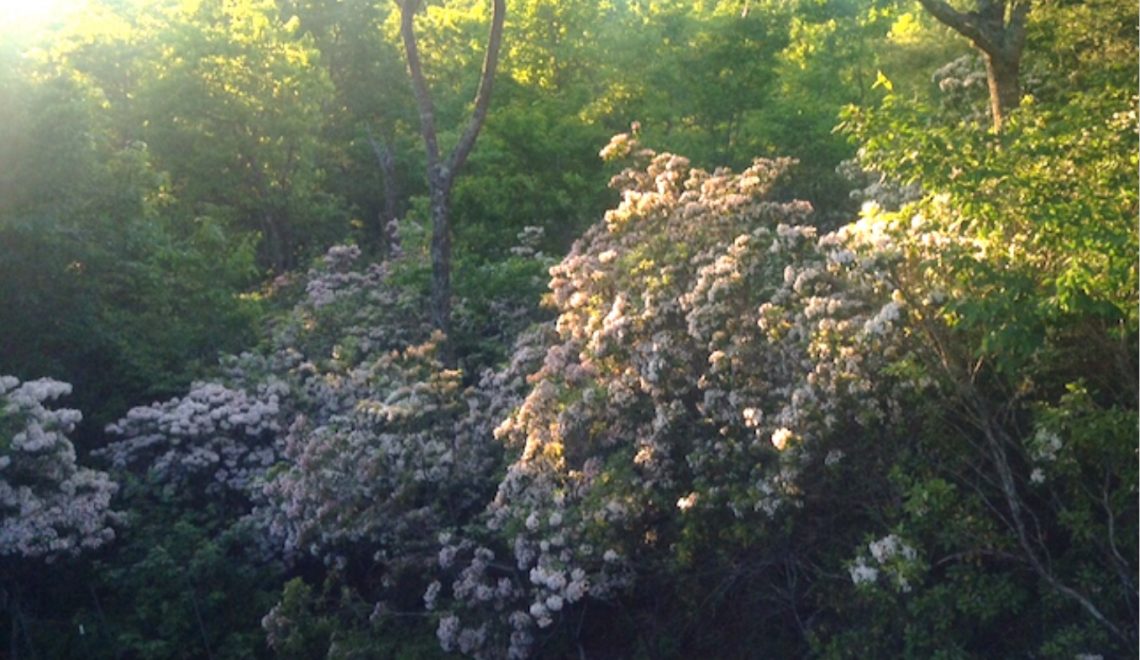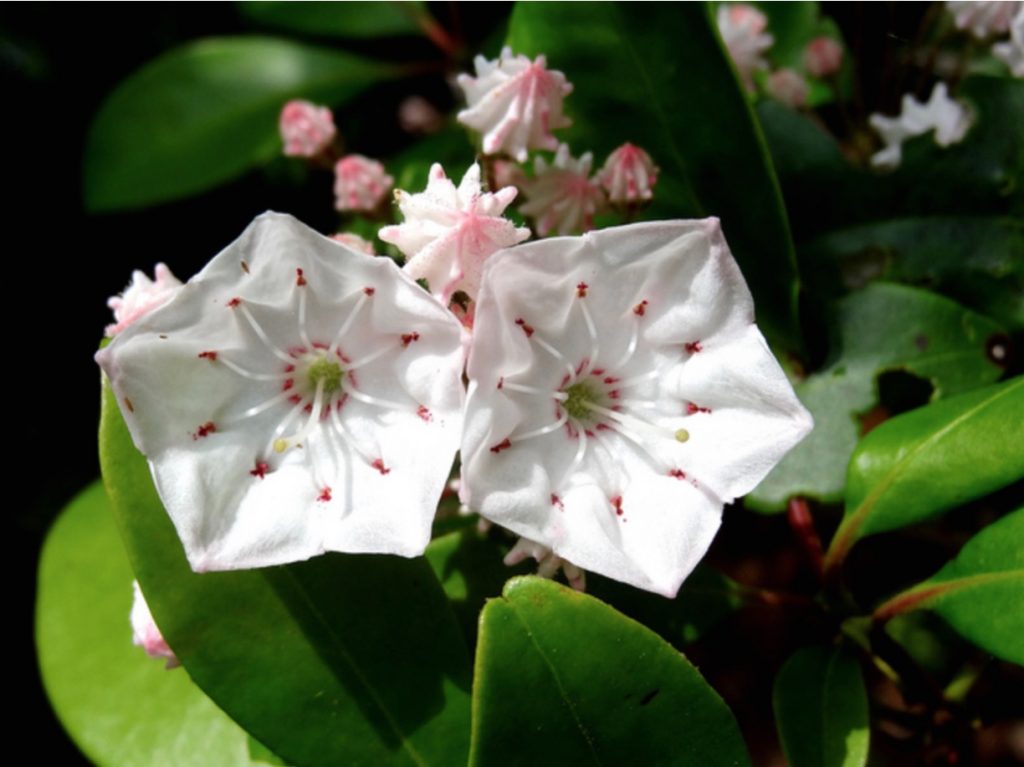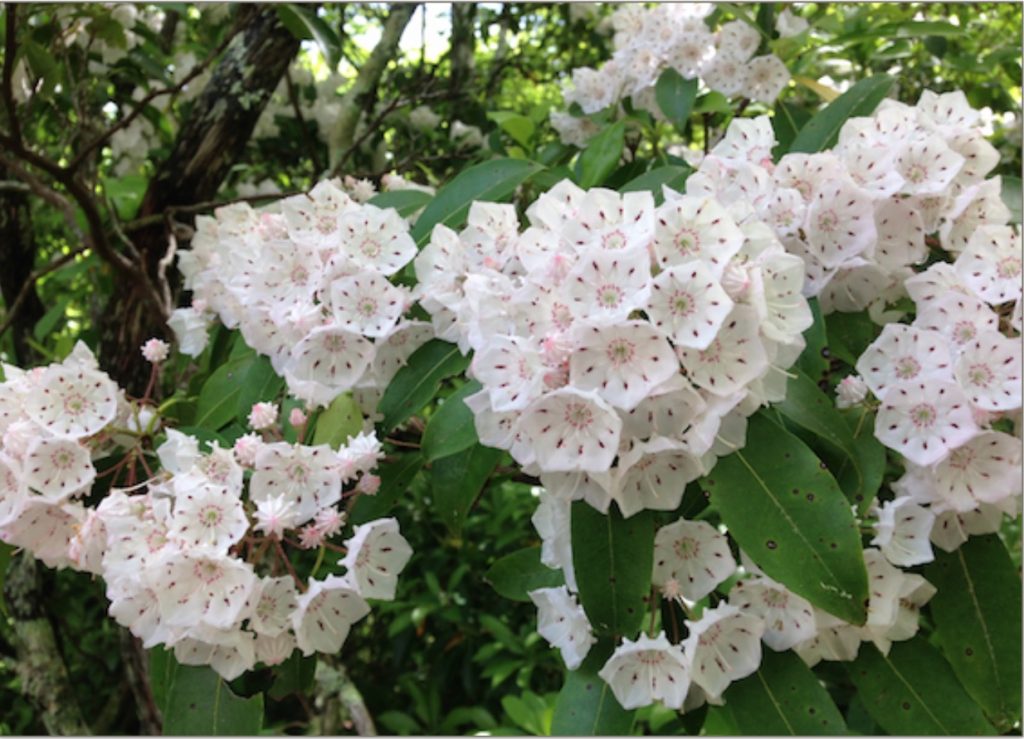Mountain Laurel in the Spring June 2018

by Linda Martinson Certified Blue Ridge Naturalist
The yearly display of mountain laurels can be one of stunning beauty during May and June when banks of mountain laurel blooms cascade along the roads and down the ridges all over our slice of Western North Carolina. Mountain Laurel (Kalmia latifolia) is a gnarly-branched, broadleaf evergreen shrub or small tree native to Eastern North American from New England to the Florida panhandle, commonly found on rocky slopes and mountainous forest areas. It often grows in dense thickets that can cover large areas of forest floor, and it is admired for its striking spring flowers and bright year-round green foliage. Other names for mountain laurel include Ivybush, Calico Bush, Spoonwood (because native Americans used to make their spoons out of it), Sheep Laurel, Lambkill and Clamoun.
It is surprising that native Americans made spoons from mountain laurel branches, and Lambkill may be a more appropriate name, because all the parts of the plant, the flowers, twigs, and even the pollen, are toxic if ingested. Mountain laurel is poisonous to several different animals besides humans, including horses, goats, cattle, sheep, and deer, and symptoms of toxicity begin to appear about 6 hours following ingestion and are severe.

The light-rose to dark-pink flowers are about 1” across and appear in terminal clusters on the branches. The chalice-shaped blooms have five points and open to 10 star points with purple markings inside. The flower clusters cover each shrub/tree for several weeks. Mountain laurels are noted for often having exceptional bloom. As a native plant, mountain laurels are an excellent source of nectar for pollinating insects including native bumble bees and butterflies.
The plant has a unique system of pollination. The unopened blossoms look like little knobs and as they open, the knobs form pockets with the anthers (the pollen carrying part of a flower) curled back like springs. The small purple markings inside present a prominent and clearly marked landing pad for pollinating insects. In most flowers, the anthers are free and exposed so that insects can easily knock off the pollen. The Mountain Laurel has a more efficient pollinating strategy. The pollen of the anthers that are tucked into the blossom pockets is well protected from rain and wind but when a pollinating insect lands on the flower, its weight acts like a trigger springing the taut stem of one of the anthers. The sprung anther hits the insect gently on the back quite efficiently covering it with pollen.
Compared to other flowers, mountain laurel flowers produce a moderate amount of pollen, but because of its efficient trigger system of pollination most of the pollen ends up on the body of a pollinator, rather than being blown around and spilled. It is a highly economic method to spread the pollen which is a good thing, because honey made from large amounts of mountain laurel pollen would be toxic. There is much to admire about the Mountain Laurel: its blossoms are iconic, elegant, and evocative — they remind us of home; it has a highly efficient pollination system; and it has developed ample protection from predators. Mountain laurel is around to stay, and we can admire it every spring.








46 comments